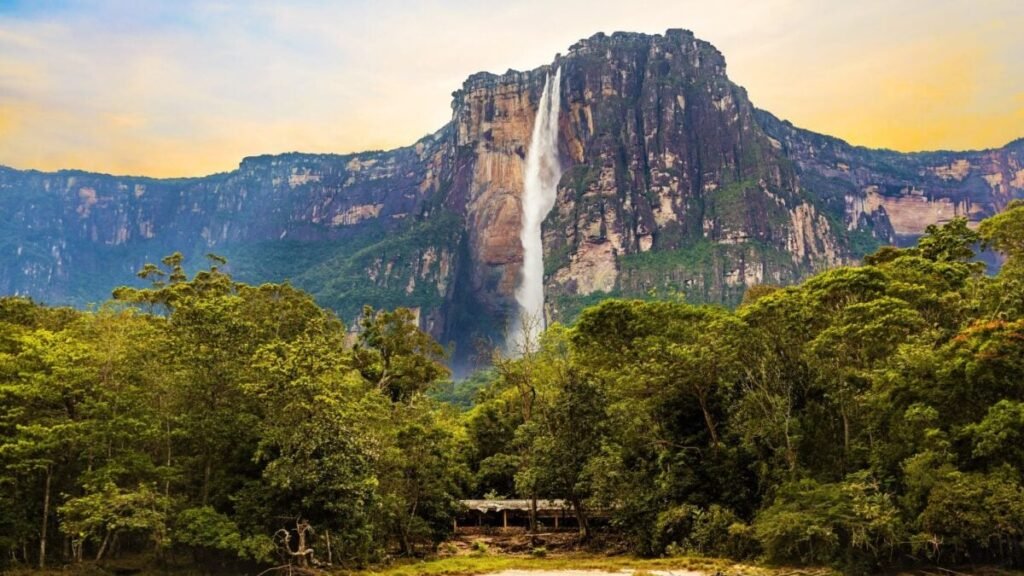The Most Mind-Blowing Waterfall You’ll Ever See in South America!

Deep within Venezuela lies a natural treasure that astonishes the entire world. It’s not just about its imposing height, but the magical aura it exudes. This wonder has stood the test of time, becoming a cultural and spiritual symbol, while also serving as a reminder of how fragile and majestic nature can be. Discover why this place sparks so much awe and mystery.
### A Fall that Touches the Sky
This waterfall not only holds the title of the highest in the world, but it also stands out for the way the water plunges from nearly a kilometer high. During its descent, the stream transforms into fine particles, creating a perpetual mist around the falls. This mist gives an ethereal air to the landscape, as if it were a corner straight out of a myth.
It’s no wonder travelers from around the world deem it as one of the most stunning natural postcards ever seen. Its magnetism lies in the visual spectacle that combines strength, height, and a veil of mystery that envelops every corner.
### The Name that Holds a Story
According to international records, the Salto Ángel, located in Canaima National Park in Venezuela, is the tallest waterfall in the world, with a height of 979 meters. Its original name is Kerepakupai Vena, in the Pemon language, meaning “waterfall of the deepest place.” The popular name we know today honors the American aviator Jimmy Angel, who flew over the area in 1933 and helped the world discover this wonder.
What’s fascinating is that this waterfall rises from Auyán-tepui, a gigantic rocky plateau in the Gran Sabana. The tepuis, billions of years old, have survived erosion and are responsible for unique ecosystems. Every corner of these landscapes harbors species that exist nowhere else on the planet, making Salto Ángel a geological and biological gem.
### Journey to the Unreachable
Reaching this waterfall is no easy task. Its remote location requires visitors to embark on an unconventional journey. Most start their journey by plane from Ciudad Bolívar or Canaima. Then, they venture into the jungle through rivers navigated in canoes, surrounded by lush vegetation.
The challenge to access it adds to the allure. The environment remains virtually untouched, shielded from mass tourism, granting each traveler the sensation of witnessing a spectacle reserved only for those daring enough to discover it.
Beyond its tourist appeal, Salto Ángel holds immense cultural significance. For the Pemon people, both the waterfall and the tepui are sacred spaces shrouded in legends and ancestral symbols. These beliefs reinforce the idea that this is not merely a geographical accident, but a stage laden with spiritual meaning.
However, this natural treasure faces serious threats. Illegal mining, deforestation, and the effects of climate change jeopardize its delicate balance. The waterfall has become an urgent reminder of the need to protect and preserve these unique ecosystems, not only for their environmental value but also for the cultural legacy they represent.







